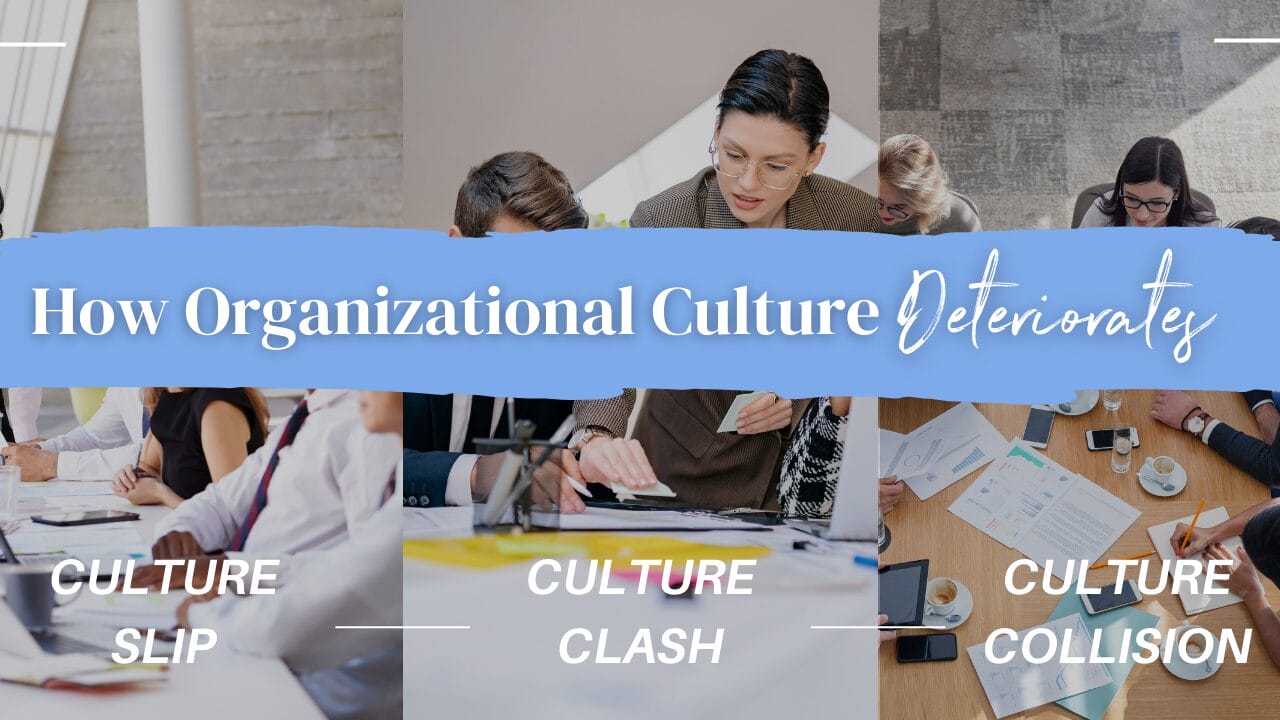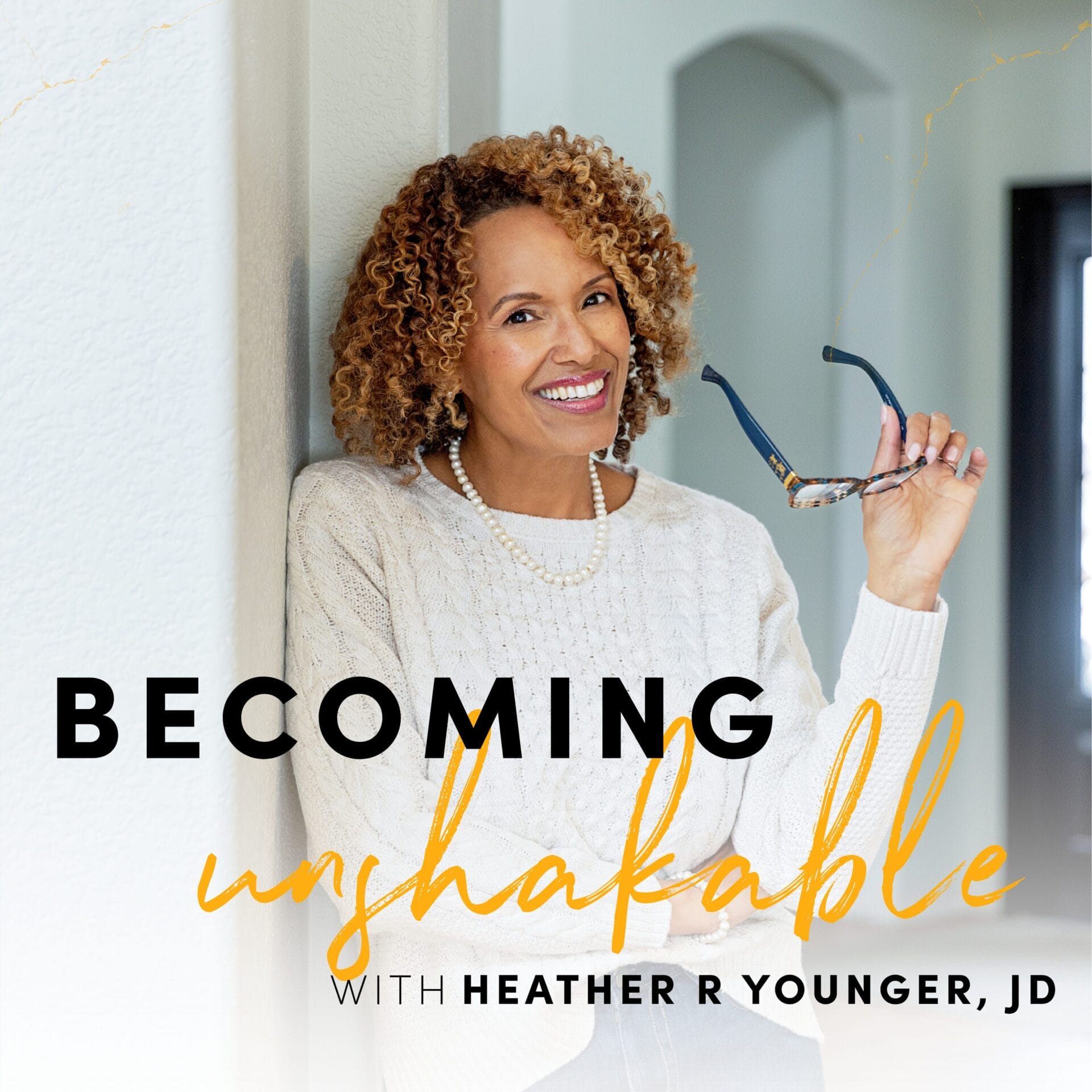Subscribe to the Leadership with Heart Podcast!
Some hold the belief that organizational culture remains static, either being inherently good or bad within companies and associations. However, what if this perspective is flawed? What if organizational culture operates on a sliding scale, presenting the possibility that what seems like a “good” culture may be quietly deteriorating, and a seemingly “bad” culture could be on the path to improvement?
I want to share an important approach to cultivating outstanding organizational cultures, offering a fresh viewpoint that serves as both a wake-up call and a source of hope for different organizations.
Let’s delve right into the three critical stages of organizational culture dynamics and how we can effectively address those stages in leadership!
1. Recognizing Culture Slip
The first step in understanding the potential deterioration of organizational culture is acknowledging the concept of Culture Slip. This subtle problem occurs beneath the surface, often unnoticed until it reaches a critical point. In Caring Leadership, we identify Culture Slip as a silent culture crusher that starts with small, almost imperceptible fractures. Leaders, especially at the C-suite level, may inadvertently contribute to this gap by refusing to engage with front-line employees, making decisions without seeking feedback, or lacking effective and proper communication.
The outcome of Culture Slip is a workforce that feels undervalued, disenfranchised, and disengaged. To counteract this, leaders must adopt a strategic and thoughtful approach grounded in active listening to prevent permanent damage.
2. Addressing Culture Clash
The second stage in the organizational culture journey is Culture Clash. This phenomenon primarily affects internal dynamics but has a ripple effect beyond the company walls, influencing customer satisfaction, sales, and loyalty. When employees and leadership are not aligned, chaos begins to surface, resulting in decreased productivity, morale, and customer dissatisfaction.
To overcome Culture Clash, organizations must prioritize effective communication, caring leadership, and a shared commitment to the company’s vision. By doing so, they can emerge stronger and more of a community than before.
3. Mitigating Culture Collision
The final stage, Culture Collision, arises when companies fail to align with customer values and expectations. This devastating phenomenon can lead to a decline in sales and place employees in the middle of a collision course. Caring Leadership recognizes the urgency of rectifying Culture Collision by fostering a culture of empathy, understanding, and customer-focused.
The key takeaway from this Culture Slip to Culture Clash to Culture Collision model is that leaders should not take their organizational culture for granted. Just as we check our gas tank or the temperature outside, we must constantly listen for and develop a strong awareness to then respond to those changes within the organizational culture.
Now, if you’re ready to see a transformation in your organizational culture positively, I am here to help! By walking through the Caring Leadership strategies, we can begin to work together to implement effective practices, ensuring a thriving and attainable culture for your team. Let’s connect if you’re interested, I’d love to guide you on this transformative journey!
Moreover, it is all about discovering the Culture Slip, confronting the issues that are arising up that are creating those culture clashing conflicts with your organization. The proper way to help resolve it is by making sure that you are on the same page as your employees and that they know that you are showing up for them and truly care about their overall well being. In the end, the only way that we can minimize Culture Collision as much as possible is to make sure we are fully aware of the changes that are happening within our organizational culture and to then listen and respond to those changes.
Podcast
In this podcast episode, Heather challenges the belief that organizational culture is fixed by introducing a dynamic 3-step model – Culture Slip, Culture Clash, and Culture Collision. Culture Slip, described as a subtle erosion beneath the surface, is recognized as a silent culture crusher that demands strategic attention. Culture Clash emphasizes the internal strife impacting external factors like customer satisfaction and loyalty, advocating for effective communication and empathetic leadership. The devastating Culture Collision occurs when companies fail to align with customer values. Leaders need to listen in order to create a magnetic culture actively.
Watch the podcast in video here
Become a Certified Art of Active Listening Facilitator
- Are you overwhelmed with possibilities but don’t know where to start?
- Do you struggle internally to get everyone on the same page?
- Think you don’t have time to create lasting change?
Are you ready to become a high-value leader who champions change in your organization through effective and caring leadership?
Mentions
Connect with Heather on LinkedIn
Let’s connect on social
https://linktr.ee/heatheryounger
About Heather R Younger
Heather R Younger is a highly sought-after speaker, 2x-TEDx speaker, diversity, equity and inclusion strategist, and contributor to leading news outlets. She is also the Founder and CEO of Employee Fanatix, a leading employee engagement and consulting firm. After over 25,000 employee engagement surveys and years of working with organizations to transform employee engagement, here’s what Heather has seen over and over: When you know how to listen, employees will tell you exactly what they need to bring their full selves to work. Book Heather to speak at your event or organization.
Visit heatheryounger.com or https://www.cmispeakers.com/heather-r-younger for more details.














